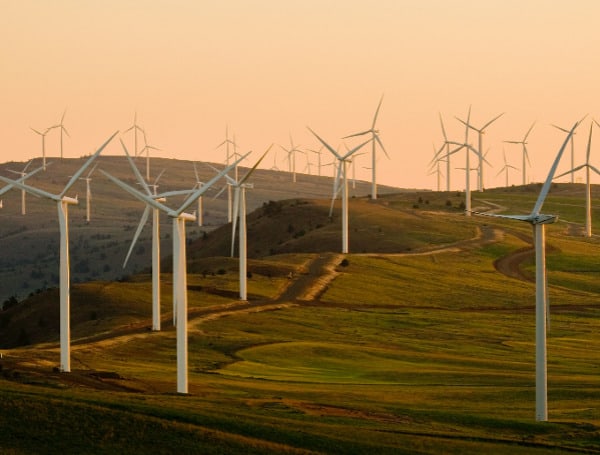Throughout the summer of 2023, a period of time in which Texas power grid managers at ERCOT were repeatedly forced to issue requests to ratepayers to conserve during peak hours on hot days, the Texas and national legacy media parroted a narrative claiming that only solar and battery storage contributions stood between citizens and blackouts in the Lone Star State.
This contention was absurd on its face, especially given that natural gas generation regularly pitched in well over half of all generation on the grid during those hot days.
But this is the kind of misreporting that has become expected as these legacy outlets strive to serve as megaphones reciting the narratives of the climate alarm lobby and Biden’s plans to force taxpayers to subsidize this energy transition, a suite of policies that have their roots in Alexandria Ocasio-Cortez’s Green New Deal.
Read: Alan Dershowitz: Enough With The Band-Aids, We Need To Stop Iran Now
This coordinated media cheerleading for solar and batteries which tend to contribute near-zero generation during peak hours of the morning and evening continued last week in the wake of the significant winter freeze event that rolled into the state on January 14 and lasted for several days. The solar industry’s own spokespeople regularly admit that no one should expect solar to generate power when the sun isn’t shining, an obvious reality that no one disputes. But then they like to boast about how much solar generation contributes once the sun comes out, which is true and great, as far as it goes.
But this is precisely the problem ERCOT has on the Texas grid: It has a shortage of generation capacity during the peak demand hours of the early mornings and evenings when, as we all know, the sun isn’t shining, especially during winter days. Indeed, when ERCOT issued conservation requests to ratepayers on Monday and Tuesday, January 15 and 16, those early morning hours were the time of special concern when the grid managers were worried about not having adequate generation available to meet peak hour demands.
As I pointed out on those days, ERCOT’s own data showed near-zero contribution from solar and battery backup, as well as disappointing contributions from the state’s vaunted wind industry. During those morning hours on those days, natural gas plants provided well over 60% of generation, with coal plants pitching in another 18-20%. Taken together, plants using those two much-derided fossil fuels often accounted for over 85% of all generation on the grid.
Therein lies the real success story coming out of that cold snap for ERCOT and everyone involved in Texas power generation. Unlike in Winter Storm Uri, which caused blackouts across the state in February 2021, the natural gas system in Texas delivered consistently at full throttle throughout the week last week. During Uri, as much as 30% of the natural gas infrastructure critical to generation on the grid froze up, often because ERCOT cut off electricity service to well sites, compressor stations and pipeline infrastructure.
Read: Texas Refuses To Vacate Border Area, Puts Up More Wire In Defiance Of SCOTUS
In the wake of Uri, this failure by both the natural gas industry and regulators to properly designate these facilities as critical infrastructure was identified as a key weakness in the system, leading to a major effort being mounted by all involved to correct the situation. The big story out of Texas last week was that that effort has been hugely successful. But our legacy media still pretends that solar and batteries did the trick, when in fact they contributed almost nothing when it really mattered.
A word of caution still applies, though. Despite last week’s positive outcome, it must be noted that this most recent winter weather event paled in comparison to Uri. The Texas grid remains dangerously short of dispatchable thermal reserve capacity needed to endure another Uri-level storm. Incentives enacted by the 2023 Texas legislature should help correct that situation, but it will take several years to come about, leaving Texans still vulnerable to the most severe weather events.
Last week, though, represented real progress, even if the main reasons why remain a mystery to our legacy media establishment.
David Blackmon is an energy writer and consultant based in Texas. He spent 40 years in the oil and gas business, where he specialized in public policy and communications.
The views and opinions expressed in this commentary are those of the author and do not reflect the official position of the Tampa Free Press or Daily Caller News Foundation.
Android Users, Click To Download The Tampa Free Press App And Never Miss A Story. Follow Us On Facebook and Twitter. Sign up for our free newsletter.

